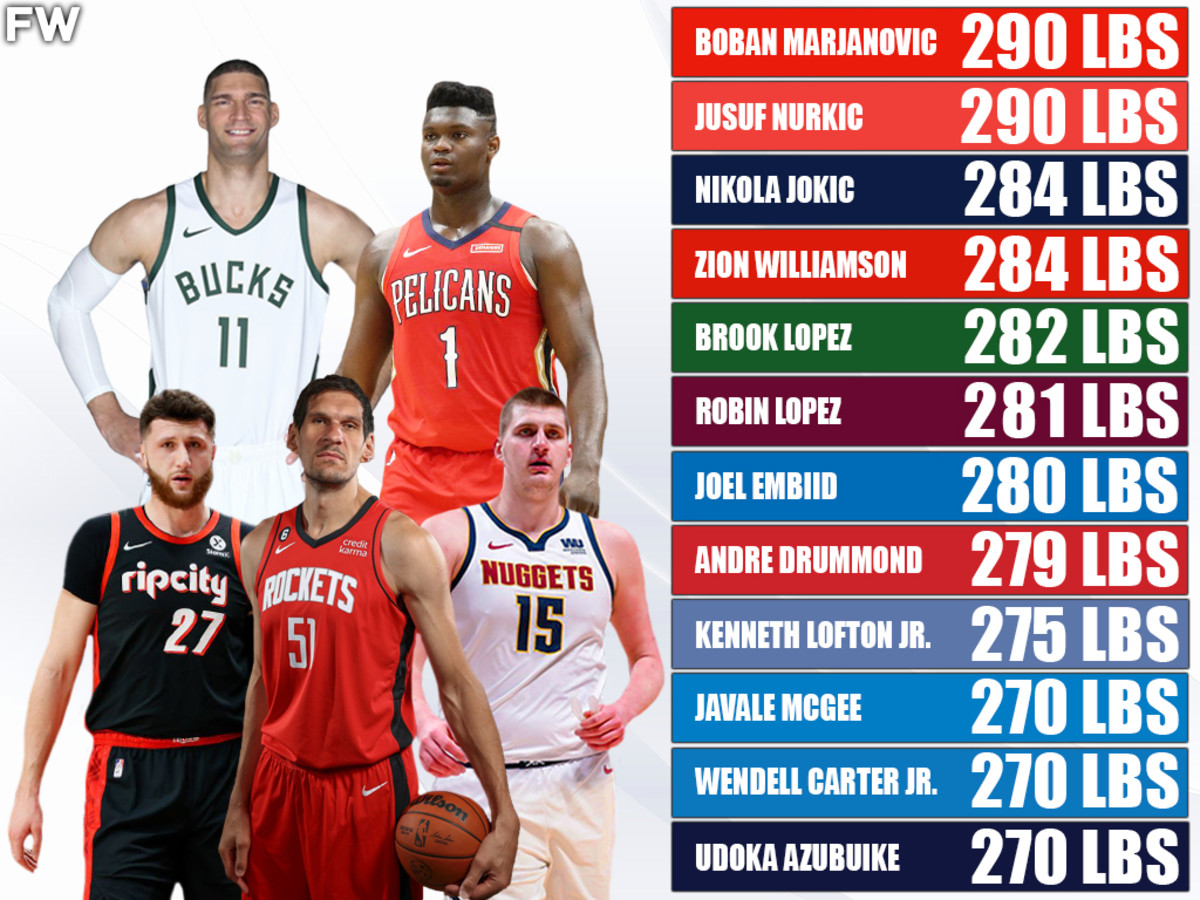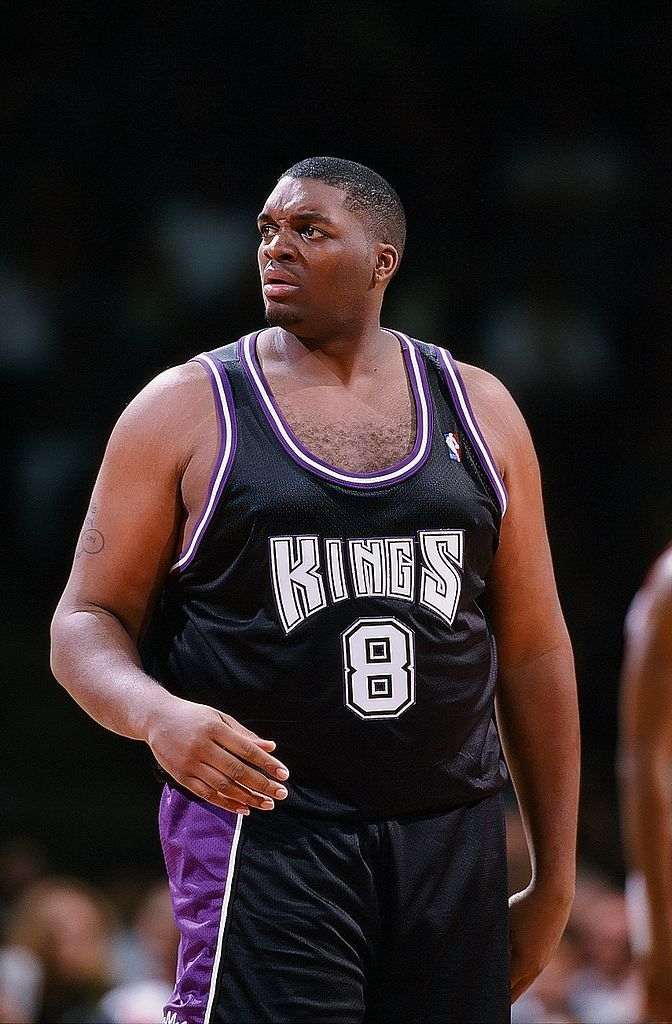Ever wondered who holds the title for the heaviest NBA player? It’s not just about size—it’s about strength, presence, and dominance on the court. Basketball fans often marvel at the sheer physicality of these athletes, and today we’re diving deep into the world of the heaviest players in NBA history. Whether you’re a die-hard fan or just curious about the stats, this article’s got you covered. Let’s get started, shall we?
When you think about the NBA, you probably picture tall, lean athletes flying through the air with grace. But what about the heavyweights of the league? These players bring a different kind of power to the game, one that’s rooted in sheer mass and unrelenting force. They’re the ones who command respect in the paint and can anchor a team’s defense like no one else.
So, who exactly is the heaviest NBA player? The answer might surprise you. Over the years, the league has seen some truly massive figures, each contributing their own unique flair to the game. Stick around as we break down the stats, stories, and legends behind these basketball giants. And hey, maybe you’ll discover your new favorite player along the way.
Table of Contents
- Biography of the Heaviest NBA Player
- Key Stats and Measurements
- A Brief History of Heavyweights in the NBA
- The Impact of Size on the Game
- Challenges Faced by Heavy Players
- Training Secrets of Heavy Athletes
- Health Considerations for Big Players
- Breaking Records: The Heaviest of All Time
- The Future of Big Men in Basketball
- Final Thoughts on the Heaviest NBA Players
Biography of the Heaviest NBA Player
Who Holds the Title?
Let’s talk about the man who officially holds the title for the heaviest NBA player: Chuck Nevitt. Standing at an impressive 7 feet 5 inches (226 cm), Chuck wasn’t just tall—he was massive. At his peak, he tipped the scales at 350 pounds (159 kg), making him a force to be reckoned with on the court. Born on June 3, 1956, in San Diego, California, Chuck’s journey to the NBA was anything but ordinary.
Chuck’s career spanned from 1983 to 1994, during which he played for several teams, including the Houston Rockets, Los Angeles Lakers, and Detroit Pistons. Although he wasn’t a star player in terms of scoring, his presence in the paint was invaluable. Coaches loved him for his ability to block shots and protect the rim, and teammates respected him for his work ethic and dedication.
Early Life and Career
Growing up, Chuck was always tall for his age, but it wasn’t until high school that he discovered his love for basketball. His height made him an instant standout, and college scouts quickly took notice. He attended the University of Houston, where he honed his skills and developed into a formidable center. After college, Chuck was drafted by the Houston Rockets in the 1982 NBA Draft.
Throughout his career, Chuck was known for his humility and humor. Despite his size, he never took himself too seriously and often joked about being the “human backboard.” Fans loved him for his personality, and his legacy continues to inspire young players today.
Key Stats and Measurements
Let’s break down the numbers. Chuck Nevitt’s stats are truly impressive, especially when you consider his size. Here’s a quick rundown:
- Height: 7 feet 5 inches (226 cm)
- Weight: 350 pounds (159 kg)
- Position: Center
- Teams: Houston Rockets, Los Angeles Lakers, Detroit Pistons
- Career Span: 1983–1994
Chuck’s size wasn’t just a novelty; it was a strategic advantage. His ability to occupy space and dominate the paint made him a valuable asset to any team. While he may not have been the most prolific scorer, his defensive contributions were unmatched.
A Brief History of Heavyweights in the NBA
The NBA has seen its fair share of heavyweights over the years. From Wilt Chamberlain to Shaquille O’Neal, these players have left an indelible mark on the game. But what makes a player “heavy”? Generally, it’s a combination of height, weight, and overall physical presence. Let’s take a look at some of the other notable heavyweights in NBA history.
Wilt Chamberlain: The Original Giant
Wilt Chamberlain, aka “Wilt the Stilt,” was a true pioneer in the world of big men. Standing at 7 feet 1 inch (216 cm) and weighing around 275 pounds (125 kg), Wilt was a dominant force during his time. He set countless records, including the infamous 100-point game, and remains one of the most iconic players in NBA history.
Shaquille O’Neal: The Modern-Day Titan
No discussion of heavyweights would be complete without mentioning Shaquille O’Neal. At 7 feet 1 inch (216 cm) and 325 pounds (147 kg), Shaq was a physical specimen who redefined the center position. His combination of size, strength, and athleticism made him nearly unstoppable on the court. Shaq’s legacy continues to inspire players today.
The Impact of Size on the Game
Size matters in basketball, especially when it comes to the center position. Heavy players like Chuck Nevitt, Wilt Chamberlain, and Shaquille O’Neal bring a unique set of skills to the game. Their ability to dominate the paint, block shots, and protect the rim is unmatched. But size isn’t just about physical presence—it’s also about how it affects the game as a whole.
Advantages of Being Big
- Rebounding: Big players have a natural advantage when it comes to grabbing rebounds. Their height and reach allow them to outjump smaller opponents.
- Defense: Heavy players can anchor a team’s defense, blocking shots and deterring opponents from driving to the basket.
- Post Presence: In the low post, big players can create mismatches against smaller defenders, leading to easy scoring opportunities.
Challenges of Being Big
Of course, being a heavyweight isn’t without its challenges. These players often face issues with mobility, endurance, and health. Coaches must carefully manage their minutes to ensure they stay fresh and avoid injury. Despite these challenges, heavy players continue to play a crucial role in the game.
Challenges Faced by Heavy Players
Being a heavyweight in the NBA isn’t easy. These players face unique challenges that can affect their performance and longevity. From physical demands to mental toughness, here’s a look at some of the hurdles they must overcome.
Physical Demands
The physical demands of being a heavy player are immense. Carrying so much weight takes a toll on the body, especially over the course of a long season. Heavy players often deal with issues like joint pain, fatigue, and injury. To combat these challenges, they must maintain a rigorous training regimen and pay close attention to their health.
Mental Toughness
Beyond the physical challenges, heavy players must also possess mental toughness. They often face criticism from fans and media, who may question their ability to keep up with smaller, more agile opponents. Staying focused and confident in the face of adversity is key to success.
Training Secrets of Heavy Athletes
So, how do heavy players stay in shape? It all comes down to training. These athletes follow specialized programs designed to build strength, improve endurance, and enhance mobility. Here are a few secrets from their training routines:
- Strength Training: Heavy lifting is a must for big players. They focus on exercises like squats, deadlifts, and bench presses to build muscle and increase power.
- Cardiovascular Exercise: While heavy players may not be known for their speed, they still need to maintain a certain level of cardiovascular fitness. Activities like cycling and swimming help improve endurance without putting too much strain on the joints.
- Flexibility and Mobility: Stretching and mobility exercises are crucial for maintaining flexibility and preventing injury. Heavy players often work with trainers to develop personalized routines that address their specific needs.
Health Considerations for Big Players
Health is a top priority for heavy players. Carrying so much weight can lead to a variety of health issues, including joint pain, cardiovascular problems, and respiratory issues. To stay healthy, these athletes must take proactive steps to manage their well-being.
Proper Nutrition
Good nutrition is essential for heavy players. They need to consume enough calories to fuel their bodies while avoiding excessive fat gain. A balanced diet rich in protein, healthy fats, and complex carbohydrates helps them maintain their strength and energy levels.
Regular Check-Ups
Regular medical check-ups are crucial for monitoring the health of heavy players. These athletes often work closely with team doctors and trainers to address any potential issues before they become serious problems.
Breaking Records: The Heaviest of All Time
Chuck Nevitt may hold the title for the heaviest NBA player, but he’s not the only one to break records. Throughout history, several players have pushed the limits of size and strength. Here’s a look at some of the heaviest players in NBA history:
- Chuck Nevitt: 350 pounds (159 kg)
- Shaquille O’Neal: 325 pounds (147 kg)
- Gheorghe Mureșan: 340 pounds (154 kg)
- Manute Bol: 315 pounds (143 kg)
Each of these players brought something unique to the game, and their legacies continue to inspire new generations of athletes.
The Future of Big Men in Basketball
As the game evolves, the role of big men continues to change. With the rise of smaller, more versatile players, some have questioned the future of heavyweights in the NBA. But don’t count them out just yet. These players still bring a level of dominance and intimidation that no one else can match.
Adapting to Modern Trends
Modern big men are learning to adapt to the changing landscape of the game. Many are developing skills like shooting from beyond the arc and handling the ball like guards. This versatility allows them to remain relevant in today’s fast-paced, perimeter-oriented game.
Final Thoughts on the Heaviest NBA Players
So, there you have it—the story of the heaviest NBA players and their impact on the game. From Chuck Nevitt to Shaquille O’Neal, these giants have left an indelible mark on basketball history. While size may not be the only factor in success, it’s certainly an advantage that can’t be ignored.
As the game continues to evolve, the role of big men will undoubtedly change. But one thing is certain: heavy players will always have a place in the NBA. Their strength, presence, and passion for the game make them some of the most fascinating athletes in the world.
So, what do you think? Who’s your favorite heavyweight player? Let us know in the comments below, and don’t forget to share this article with your friends. Together, let’s keep the conversation going and celebrate the giants of the court!


